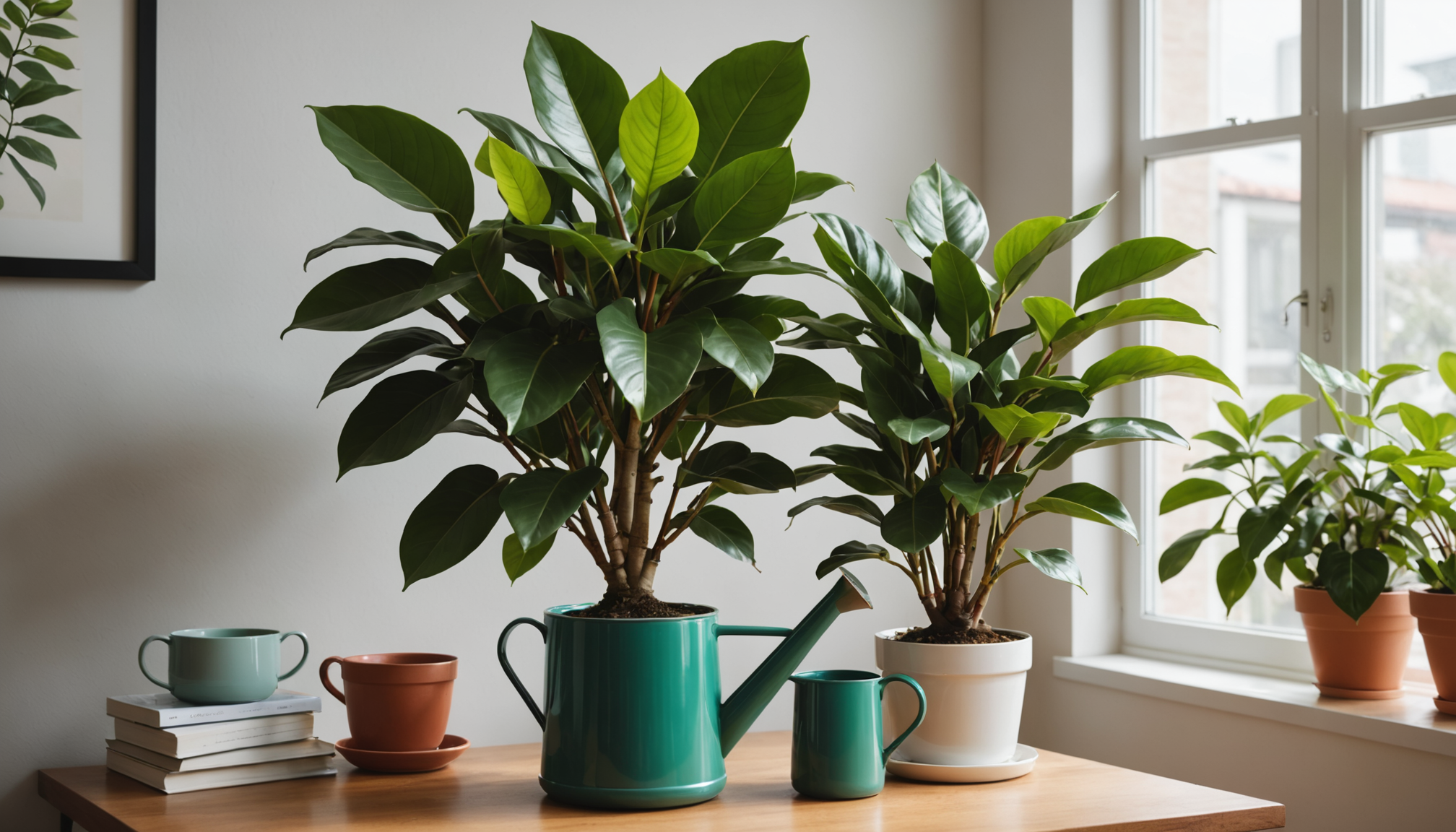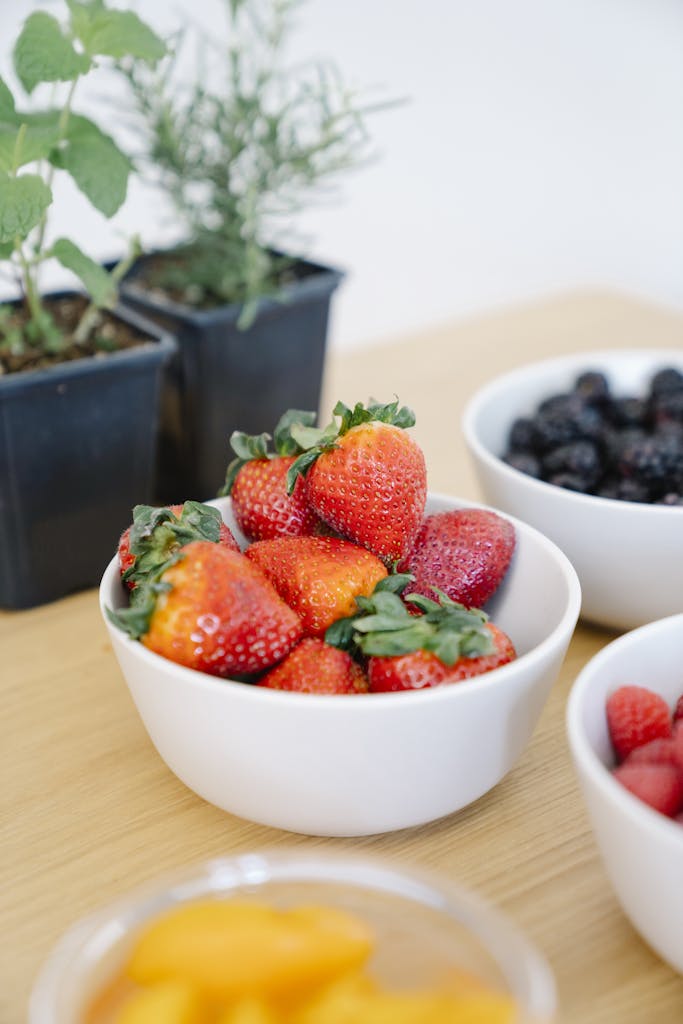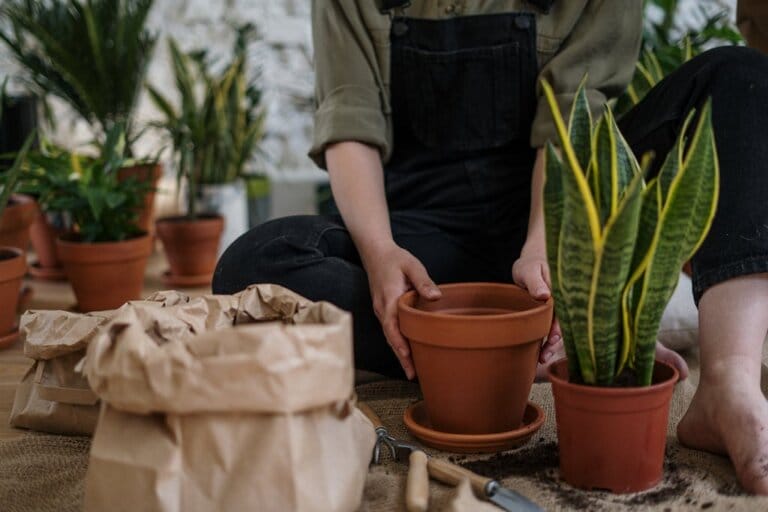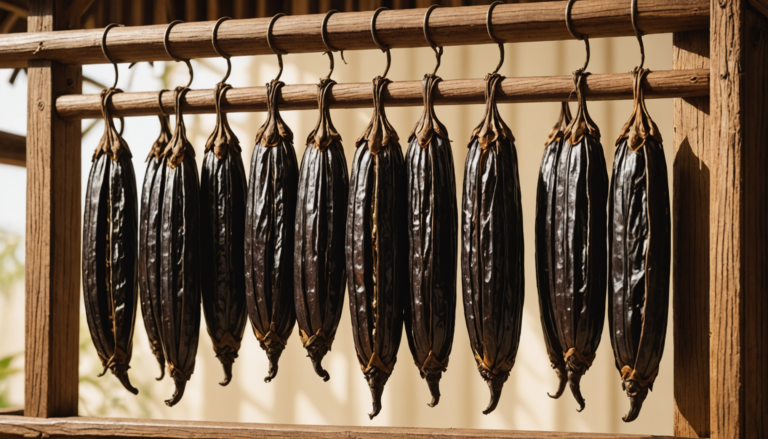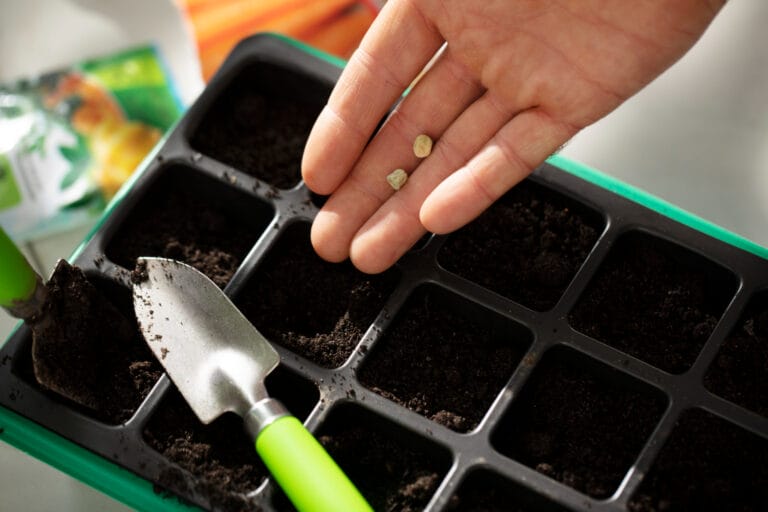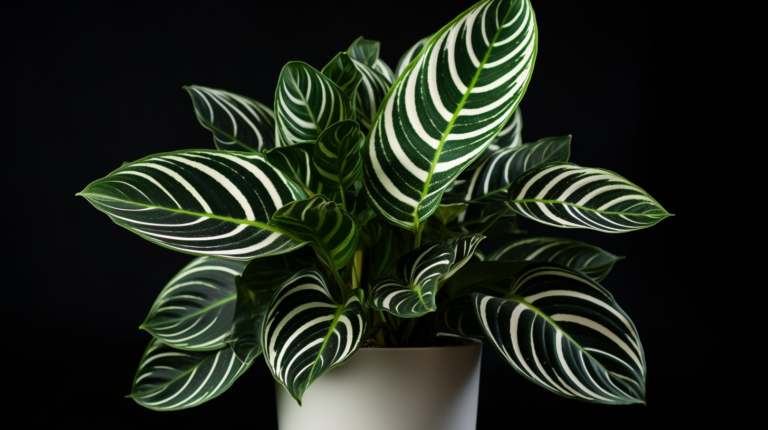When it comes to indoor plants, did you know that ficus trees can add a touch of elegance and life to your home? Exploring the types of ficus plants indoor opens up a world of beautiful houseplants, like the popular rubber plant and the weeping fig, all known for their stunning, glossy leaves. These plants not only brighten your space but can also improve indoor air quality, making your environment healthier!
Understanding how to care for ficus plants is crucial, especially since overwatering can lead to root rot and leaf drop. In this guide, we’ll dive into the different varieties of ficus, essential care tips, and common mistakes to avoid. Plus, we’ll share how to enhance your home decor with these tropical beauties. Get ready to discover your perfect indoor plant companion!
Overview of Types of Indoor Ficus Plants
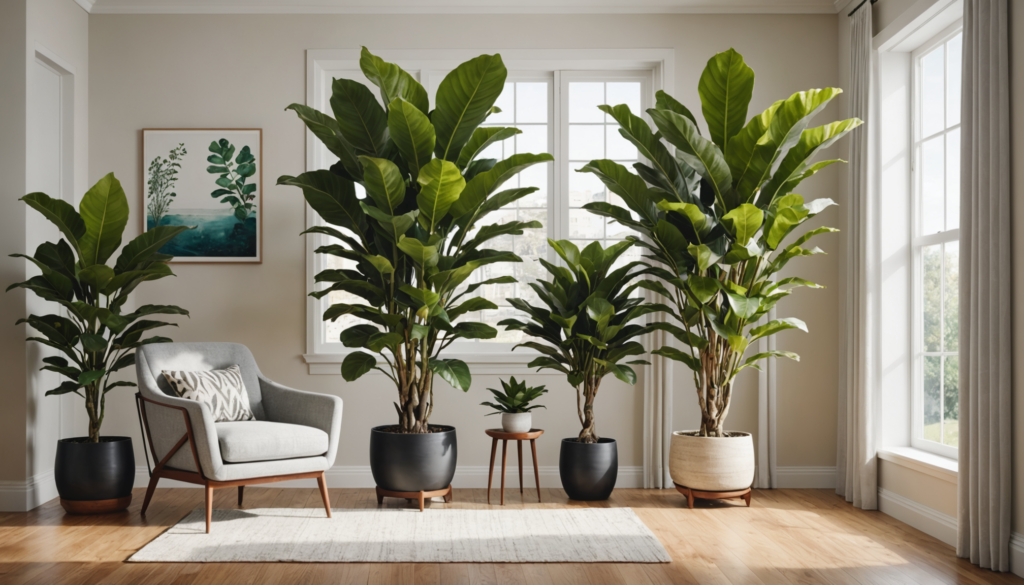
What is a Ficus Plant?
Ficus is a group of plants with around 850 species, known as fig trees, in the Moraceae family. Most Ficus plants grow in tropical regions, but some thrive in warmer temperate climates. The weeping fig, scientifically named Ficus benjamina, stands out as a popular choice for home décor due to its attractive appearance and simple care requirements.
Characteristics of Indoor Ficus Types
Indoor Ficus plants are recognized for their glossy green leaves, which differ in shape and size. Most varieties are evergreen, retaining their leaves year-round, though some may shed leaves during colder months. Ficus plants produce a unique flower arrangement called inflorescence. This consists of a thick stem hosting many tiny flowers that come together to form a fig.
Common characteristics of indoor Ficus types include:
- Glossy Leaves: Shiny, dark green leaves enhance indoor beauty.
- Varying Sizes: They range from small bushes to tall trees, depending on the species.
- Adaptability: Ficus plants thrive in various environments, making them ideal for indoor spaces.
Popular Ficus Trees for Home Use
Several Ficus varieties are favored as houseplants due to their beauty and low maintenance needs. Here are some popular options:
- Ficus benjamina (Weeping Fig): This plant features graceful, arching branches and is perfect for adding elegance to indoor spaces.
- Ficus elastica (Rubber Plant): Known for its large, leathery leaves, the rubber plant is appreciated for its air-purifying benefits and can grow quite tall, making it a striking addition.
- Ficus lyrata (Fiddle Leaf Fig): This variety boasts large, violin-shaped leaves and has become trendy in modern interior design. It thrives in bright, indirect light.
- Ficus pumila (Creeping Fig): This small-leafed vine is excellent for covering walls or hanging in pots, providing a lush, green touch to any indoor area.
These Ficus varieties not only enhance the aesthetic of indoor environments but also improve indoor air quality by filtering out pollutants. Their attractive foliage and ease of care make them ideal choices for homes.
Sources
- Wikipedia: Ficus
- The Spruce: How to Grow and Care for Weeping Fig
- Epic Gardening: How to Plant, Grow, & Care for Weeping Fig Tree
Understanding the Care Guide for Ficus Plants

Caring for ficus plants is vital for their health and beauty. These popular indoor houseplants thrive with proper conditions and care. Here are essential tips to help ficus plants flourish in indoor spaces.
Essential Care Tips for Ficus Trees
- Lighting: Ficus plants thrive in bright, indirect sunlight. This light helps them grow strong. Avoid direct sunlight, as it can scorch their leaves. Too little light may slow their growth.
- Watering: Water ficus plants only when the top inch of soil feels dry. Overwatering can cause root rot, which leads to decay from excess moisture. Use well-draining pots with drainage holes to prevent water from collecting.
- Humidity: Ficus trees prefer higher humidity. Misting the leaves, especially during dry months, helps. A humidifier can also maintain the right moisture level in the air.
- Temperature: Keep ficus plants in a stable environment. They thrive at temperatures between 65°F to 75°F (18°C to 24°C). Avoid placing them near cold drafts or heating vents.
- Soil: Use a fast-draining potting mix for ficus plants. This soil type allows excess water to drain quickly and prevents root rot.
- Pruning: Regular pruning encourages new growth and maintains the plant’s shape. Remove any dead or damaged leaves to keep the plant healthy.
Common Mistakes in Ficus Plant Care
- Overwatering: This is a common mistake. Overwatering can cause root rot and lead to leaf drop. Always check the soil moisture before watering.
- Ignoring Temperature Fluctuations: Ficus plants are sensitive to sudden temperature changes. Keep them away from drafty windows and heating vents to avoid stress.
- Neglecting Pruning: Failing to prune regularly can lead to leggy growth and unattractive foliage. Trim dead or yellowing leaves to maintain a healthy appearance.
- Low Light Conditions: While some ficus varieties tolerate lower light, many thrive in bright, indirect light. Insufficient light can slow growth and cause leaf loss.
- Incorrect Soil Type: Using heavy soil that retains too much water can harm the roots. Always choose a well-draining mix for good root health.
How to Repot Your Ficus Plant for Health
- Timing: Repot ficus plants in spring when they actively grow. This helps them adjust to their new pot.
- Choosing the Right Pot: Select a pot that is one size larger than the current one and ensure it has good drainage holes to prevent waterlogging.
- Soil Preparation: Use fresh, well-draining potting soil. This provides necessary nutrients while allowing excess water to escape.
- Repotting Method:
- Carefully remove your plant from its old pot.
- Using your fingers, slowly loosen any tight bound roots
- Place the plant in the new pot at the same soil level as before.
- Fill around the roots with fresh soil and water thoroughly.
- Post-Repotting Care: After repotting, place the ficus in bright, indirect light. Avoid direct sunlight for a few days to help the plant adjust.
By following these care tips and avoiding common mistakes, ficus plants can thrive and enhance indoor spaces. Regular attention to their needs will ensure a healthy and vibrant plant.
Best Practices for Ficus Plant Growth Indoors
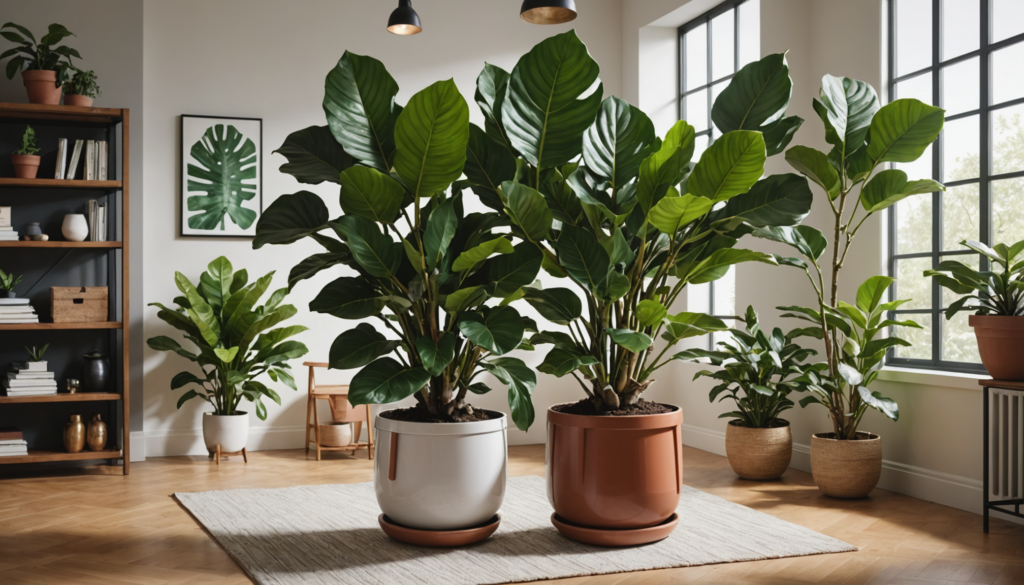
Ficus plants thrive in indoor settings, making them popular for homes and offices. To help these beautiful houseplants reach their full potential, it is essential to follow best practices for their growth. This section discusses optimal lighting, effective watering techniques, and proper fertilization for indoor Ficus plants.
Optimal Lighting for Your Indoor Ficus
Ficus plants, like the Weeping Fig and Rubber Plant, flourish in bright, indirect light. They prefer locations near windows that allow light without direct sun exposure, which can scorch their leaves. Consider these key points for optimal lighting:
- Bright, Indirect Light: Position Ficus plants near east or south-facing windows for ample light while protecting them from harsh rays.
- Avoid Direct Sunlight: Direct sunlight can burn leaves. Use sheer curtains to filter the light if necessary.
- Monitor Growth: If the plant stretches, it may need more light. If leaves yellow or drop, it might be getting too much sunlight.
Maintaining the right light conditions allows Ficus plants to grow strong and healthy, showcasing their attractive foliage and air-purifying benefits.
Watering Techniques for Healthy Indoor Plants
Watering is vital for the health of Ficus plants. Consistent moisture is crucial while avoiding overwatering, which can lead to root rot. Follow these essential guidelines:
- Check Soil Moisture: Water when the top inch of the soil feels dry. This helps prevent overwatering and underwatering.
- Use Well-Draining Soil: Ensure the pot has drainage holes to let excess water escape. Soil that retains moisture can lead to leaf drop or root rot.
- Adjust Watering Frequency: During the growing season (spring and summer), Ficus plants often need more water. In fall and winter, reduce watering as growth slows.
By following these watering techniques, indoor Ficus plants can thrive, maintaining their lush appearance and vitality.
Fertilizing Your Ficus Tree Effectively
Fertilization supports healthy growth and vibrant foliage in Ficus plants. Applying the right nutrients at the right times is essential for their health. Here are guidelines for fertilizing indoor Ficus:
- Use Balanced Liquid Fertilizer: During the active growing season (spring and summer), fertilize every 4-6 weeks with a balanced liquid fertilizer. This provides necessary nutrients for growth.
- Avoid Winter Fertilization: Ficus plants typically do not require fertilizer in winter, as their growth slows significantly.
- Monitor Plant Response: If leaves yellow or growth appears stunted, consider adjusting the fertilizer type or frequency.
By effectively fertilizing Ficus plants, they can develop into strong, attractive houseplants that enhance indoor spaces.
Recognizing and Managing Pests on Ficus Plants
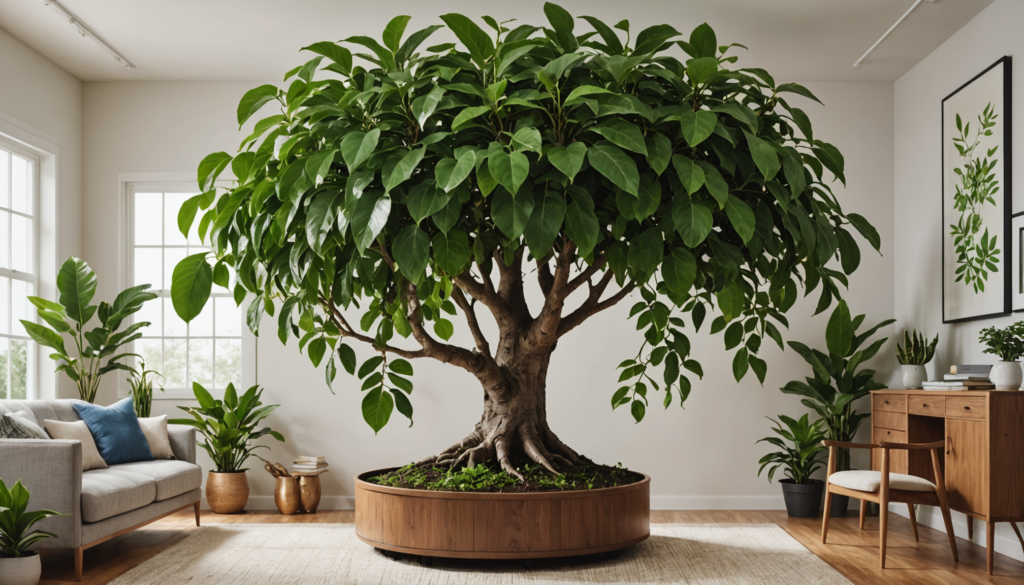
Indoor Ficus plants, including the Weeping Fig and Fiddle Leaf Fig, often face pest challenges. Recognizing and managing these pests is vital for keeping these attractive plants healthy.
Common Pests Affecting Ficus Trees
Ficus plants can attract several common pests. Knowing these pests helps in managing them effectively. Key pests to monitor include:
- Spider Mites: These tiny pests can be hard to spot. They create small spots or stippling on leaves, leading to yellowing and dropping.
- Aphids: Small green or black insects that may cause leaves to curl and stunt the plant’s growth.
- Scale Insects: These appear as small bumps on leaves and stems, weakening the plant and causing yellowing.
- Mealybugs: Resembling tiny cotton balls, these pests can lead to leaf drop and unhealthy plants if not controlled.
Identifying these pests is the first step in maintaining healthy Ficus plants.
Natural Remedies for Pest Control
Managing pests naturally is safe for indoor environments. Here are some effective remedies:
- Neem Oil: This natural pesticide disrupts the life cycles of pests like spider mites and aphids. It is safe indoors and protects plants without harming beneficial insects.
- Insecticidal Soap: Targeting soft-bodied insects, such as aphids and mealybugs, this soap suffocates pests on contact, providing a quick solution.
- Diatomaceous Earth: This non-toxic powder damages the exoskeletons of insects, leading to dehydration. Sprinkle it on soil or leaves to control pests.
- Regular Cleaning: Wiping leaves with a damp cloth removes dust and pests. This simple practice supports healthier growth and improves air quality.
Using these natural methods helps ensure Ficus plants stay robust and beautiful.
Signs of Pest Infestation to Watch For
Early detection of pest infestations is key for effective management. Look out for these signs:
- Discoloration of Leaves: Yellowing or browning leaves often indicate pest problems. Catching it early can prevent severe damage.
- Webbing: Fine webbing on leaves signals spider mites, a serious indicator of infestation.
- Sticky Residue (Honeydew): A sticky substance on leaves suggests aphid activity. This residue can attract ants, indicating pest issues.
- Leaf Drop: Sudden leaf drop may indicate stress caused by pests. This is a clear warning that the plant needs attention.
Being aware of these signs allows for timely intervention, which helps protect indoor Ficus plants from serious damage.
Decorating with Indoor Ficus Plants
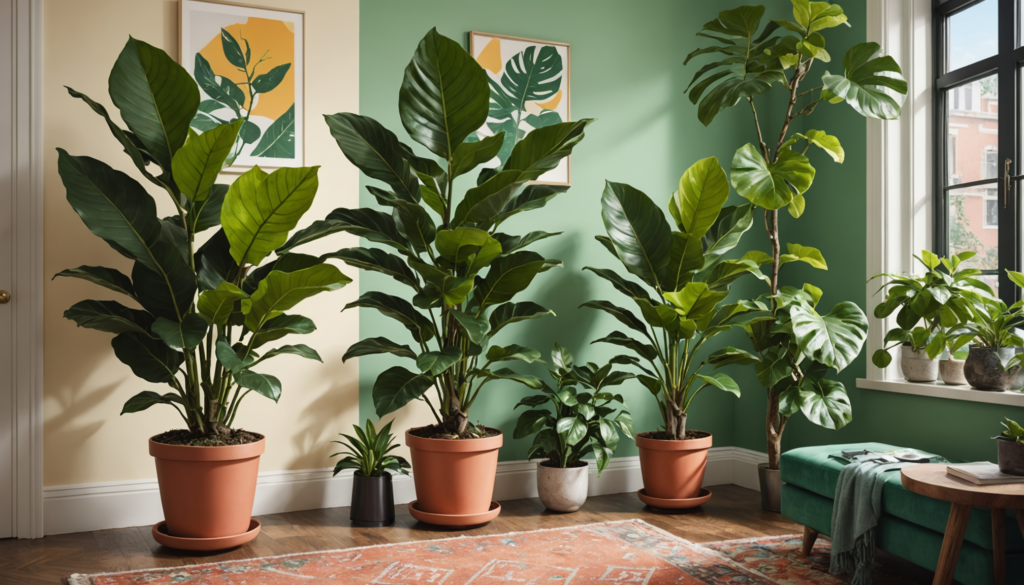
Creative Ways to Incorporate Ficus Plants in Your Home
Ficus plants bring versatility and beauty to indoor spaces. Here are some creative ideas to use them effectively:
- Focal Points: Use larger Ficus trees, like the Fiddle Leaf Fig (Ficus lyrata), as eye-catching features. Placing one in a living room or entryway draws attention and creates a vibrant atmosphere. This plant thrives in bright, indirect light, making it ideal for these areas.
- Grouping: Enhance your decor by grouping different Ficus plants at varying heights. For instance, pair a Rubber Plant (Ficus elastica) with smaller varieties like Ficus pumila. This layered look adds depth and interest to the room.
- Decorative Pots: Select pots that match your home’s style. A colorful pot can highlight the beauty of a Weeping Fig (Ficus benjamina). Ensure the pots have good drainage to prevent overwatering, which can cause root rot.
Incorporating Ficus plants into home decor creates a warm and inviting environment, showcasing their glossy green leaves.
Complementary Indoor Plant Pairings
Ficus plants work well with other indoor plants, enhancing both beauty and health. Consider these popular pairings:
- Snake Plant (Sansevieria): This low-maintenance plant thrives in similar light conditions as Ficus. Its upright shape contrasts nicely with the bushy forms of Ficus plants.
- Pothos (Epipremnum aureum): The trailing vines of Pothos beautifully contrast the upright growth of Ficus. This combination works well in hanging planters or on shelves.
- Peace Lily (Spathiphyllum): The elegant white blooms of the Peace Lily contrast with the lush green foliage of Ficus. Together, they elevate decor and improve indoor air quality.
These pairings not only enhance the aesthetic of indoor spaces but also promote a healthier environment by utilizing the air-purifying benefits of each plant.
Benefits of Ficus Trees in Interior Design
Ficus plants offer many advantages, making them excellent choices for interior design:
- Air Quality: Ficus plants improve indoor air quality by filtering out toxins and releasing oxygen. This makes them perfect for homes and offices where clean air is essential.
- Aesthetic Appeal: With their attractive foliage and varied shapes, Ficus trees add natural beauty to any decor. They enhance warmth and liveliness, making spaces feel more inviting.
- Versatility: Ficus species come in different sizes and forms, fitting into any decor style, from modern to traditional. Whether as a small tabletop plant or a towering indoor tree, they adapt well to various settings.
Incorporating Ficus plants into interior design beautifies spaces and contributes to a healthier living environment.
Conclusion
In summary, ficus plants are fantastic indoor companions, offering beautiful glossy leaves and excellent air-purifying benefits. We explored various types, including the popular rubber plant and the charming weeping fig, both perfect for enhancing indoor spaces. Remember, proper care is essential—maintaining the right amount of light, avoiding overwatering, and keeping an eye out for pests can help your ficus thrive.
Now that you know how to care for these lovely plants, why not start your own ficus collection? Discover the joy of having vibrant greenery in your home while improving your indoor air quality. Happy planting!
FAQs
1. What are the best types of ficus plants for beginners?
For those new to indoor gardening, some Ficus plants are particularly friendly. The Rubber Plant (Ficus elastica) is an excellent choice. It has thick, shiny leaves and thrives in various light conditions. The Weeping Fig (Ficus benjamina) is another great option, known for its elegant, drooping branches. Lastly, the Creeping Fig (Ficus pumila) works well in smaller spaces and can climb or trail, making it versatile for home decor.
2. How often should I water my ficus tree?
Ficus trees need moderate watering. Water them when the top inch of soil feels dry to the touch. This typically means watering every 1-2 weeks, depending on humidity and temperature. Overwatering can cause root rot, so it is important to ensure that the pot has good drainage. During cooler months, reduce watering frequency since the plant’s growth slows down.
3. What should I do if my ficus plant has yellow leaves?
Yellow leaves on a Ficus plant can indicate several issues. This often suggests overwatering, so first check the soil moisture. If the soil feels too wet, let it dry out before watering again. Yellow leaves may also mean the plant lacks enough light. Make sure your Ficus is placed where it receives bright, indirect light. If needed, trim off any dead or damaged leaves to promote new growth.

